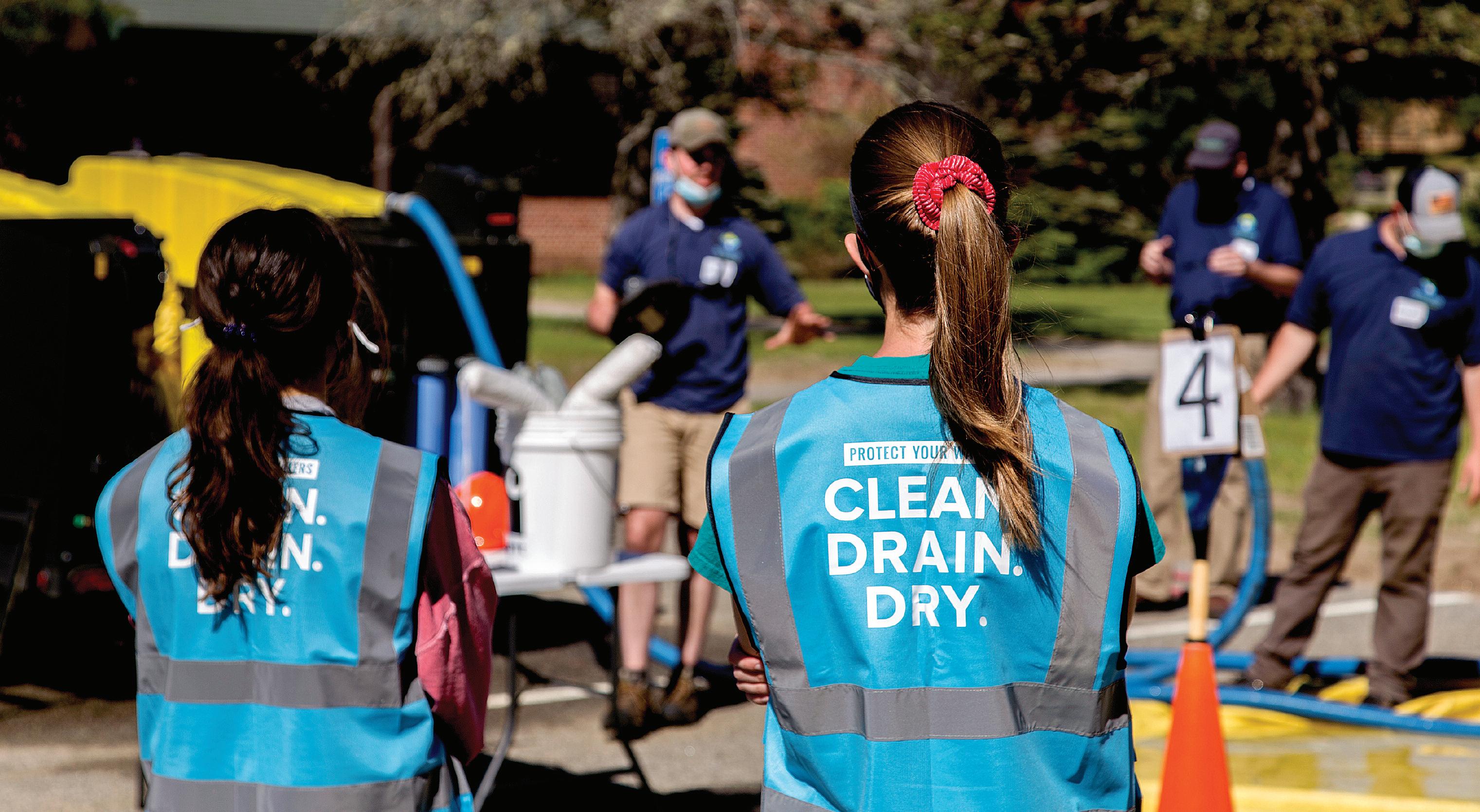
3 minute read
Hamilton County primitive camping
By SPENCER MORRISSEY
There are one million acres of woods, mountains and waters open for public recreation in Hamilton County. That’s six zeros. Hard to believe, but it’s true. Primitive camping, in short, is camping either in a lean-to or a tenting site.
Many primitive camping areas are a day’s walk along a picturesque hiking trail. Some can be found along a shore of our many ponds and lakes, and some can even be found roadside. Camping is allowed on public lands at campsites designated with a yellow “Camp Here” disk or anywhere that is at least 150 feet from any trail, body of water or roadway.
Primitive camping in the Adirondacks has other camping rules and regulations, and we always ask that you follow the Leave No Trace set of outdoor ethics. Protecting our backcountry with responsible camping practices and techniques will keep everyone’s “wild” pristine for future generations.
Adirondack lean-to
This three-sided structure is an Adirondack invention and can be a very pleasurable and unique way to have the feeling of sleeping under the stars. A lean-to is pleasant on rainy evenings and a great resting point along a day hike or a sweet spot for having a lunch. After all, food tastes better eaten outside in the fresh air.
While the availability of lean-tos is pretty good, during busy seasons they can get filled quickly. No reservations are required. Lean-tos are first-come, first-served, so carrying a tent is always advised. Lean-tos come in all sorts of sizes and sleep many campers. They must be shared to full capacity. Tents cannot be set up inside a lean-to, and a lean-to can’t be sealed off with a tarp.
Cooking and cleaning
Camping in the backcountry can be a tricky business but an enjoyable one. Cooking is one of those backcountry delights where a camper’s culinary talents go wild with delicious food you might only enjoy while camping. It is important to do it correctly and responsibly.
1. “Carry it in, carry it out” should always be followed. 2. Don’t burn trash, papers, leftovers or anything but wood in your campfire. 3. Cook your food away from your sleeping area. 4. Fully clean all cooking and eating equipment after use, and do this 150 feet away from any water source. 5. Store your food at least 100 feet away from your sleeping quarters in a bear-proof canister or by properly hanging and suspending it from a tree. 6. Disperse “gray water” from cleaning over a large area and not all in one spot.
By following simple rules like this, you can help protect the area for future users as well as limit your chances of unwanted wildlife.

Backcountry powder room
Sorry, there aren’t any hot springs in the Adirondack Park, but we do have some of the most pristine waters in the world. Therefore, we need to protect them. When brushing your teeth or cleaning up after a long hike, you should do it away from any water source and refrain from the use of soaps and shampoo.
Human waste should be dealt with in a responsible manner as well. In many primitive camping areas, there are outhouses or thunder boxes for campers to use. When outhouses are not available, all waste should be buried in a cat hole at least 6 inches deep and covered adequately to prevent pollution and wildlife attraction. All “restroom” breaks should be taken at least 150 feet away from any trail or water source to avoid contamination.
Wildlife
There are numerous species of wildlife in the Adirondack Park that you may encounter. Most wildlife is easily spooked and will run off without you even realizing it was there. However, while camping, wildlife takes on a whole new role.
Bears are the largest concern for most campers and raise the most questions. Keep your camping site clean of food waste and heavy fragrances. If you do encounter a bear at your site during the night, making loud noises will often scare them off.
Never approach wildlife under any circumstance, and do not feed it.
Mice, chipmunks and squirrels are typically the most problematic for campers. They like to chew through tents, backpacks and dry sacks to get to your food. That’s another good reason to keep food away from your camping area — to protect your gear.









